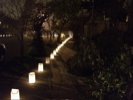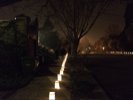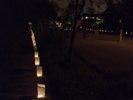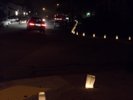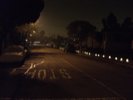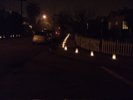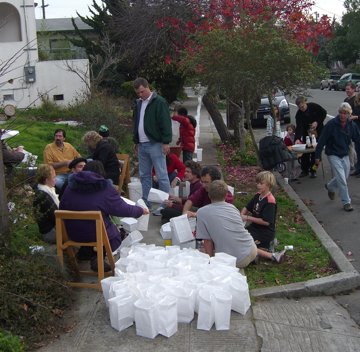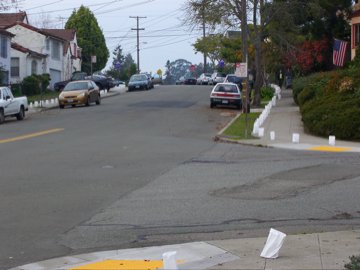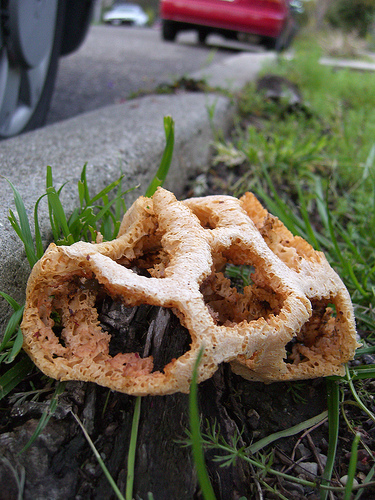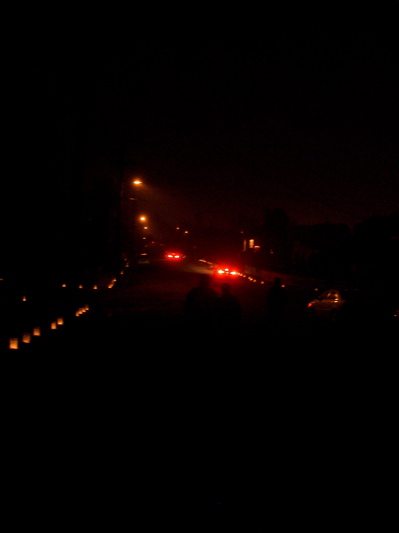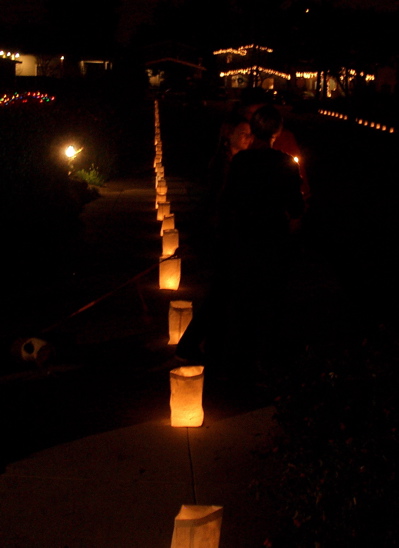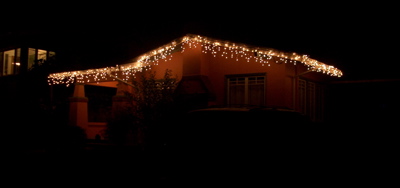As noted in previous years, the Fourth of July party here on Holly Street in beautiful, mostly unperturbed North Berkeley features a watermelon-seed spitting contest, complete with trophy. The contest features several different divisions — for “pros,” kids, novices, and seniors — and categories — distance, accuracy and “trick spitting.” The judges award colorful home-made ribbons to each participant.
Some time back there in the early ’90s, Kate and I did a trick spit that involved us pretending to spit seeds to each other in the midst of some faux acrobatics. And then we did theme spits; for instance, one honoring the soccer World Cup (spitting a seed into a goal and celebrating), another for the X Games (spitting while skateboarding), another for the Summer Olympics (synchronized spitting). The prize ribbon would be awarded based on audience applause, and we’d win handily. Then our neighbors, the Martinuccis, started to compete with trick spits based on musicals or movies: “West Seed Story”; “The Phantom Melon” (a la “Star Wars”); “Titanic”; “Harry Potter and the Spittoon of Merlin.” Seriously daunting competition. (Though Kate has expanded her contest repertoire with a song, “You’re a Grand Old Seed,” that’s become the event anthem, and debuted a new number, cabaret style, this year: “The Street Where We Spit.”)
Anyway, eventually our performances exceeded my natural EQ (embarrassment quotient) and I faded out from the contest. The Martinuccis’ extended family became less of a factor, too. So then, Kate and our neighbor Jill would take the lead in cooperative dramatic efforts. This year’s may have been the best ever. Untitled, it was topical: It combined a nod to the recent finale of “The Sopranos” with the latest ugly brouhaha from Bush’s Washington: the Scooter Libby pardon. Yeah, it’s hard to imagine, right? But it was brief, brilliantly conceived, and full of watermelon-specific puns. The script starts below (and continues after the jump). Jill played Tony; Kate played Lewis “Spitter” Libby; Nico played Pasquale, the guard; and Ellen (Jill’s sister-in-law) played the Narrator.
Narrator: For all of you who don’t have HBO, and for those of you who do and are still wondering what happened to Tony Soprano – here is how the Sopranos might have ended, and how the two most anticlimactic melondramas of the summer could have been resolved.
Scene: Tony is sitting alone in a café, eating watermelon. He spits out the seeds periodically. There is an empty chair across from him.
Guy 1: Hey Tony, there you are. I’ve got a rind to pick with you!
Tony: Yeah? Go talk to Pasquale over here. (Snaps his finger at bodyguard. Guy 1 is escorted off stage by guard, who returns)
Guy 2 : Hey “T”, I hear you’re looking for seed money for that new casino.
Tony: Yeah. We’ll talk. Call me next week.
Technorati Tags: berkeley
Continue reading “Seed Spitting”
Like this:
Like Loading...




